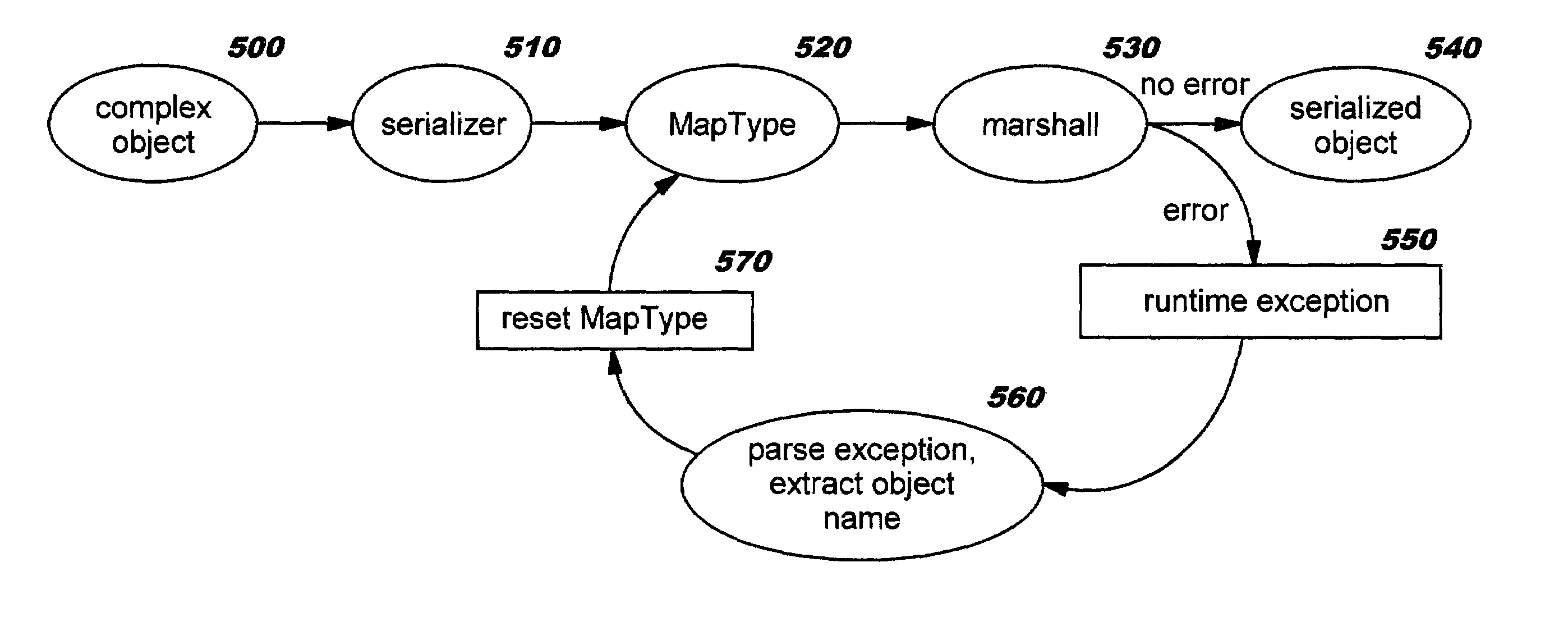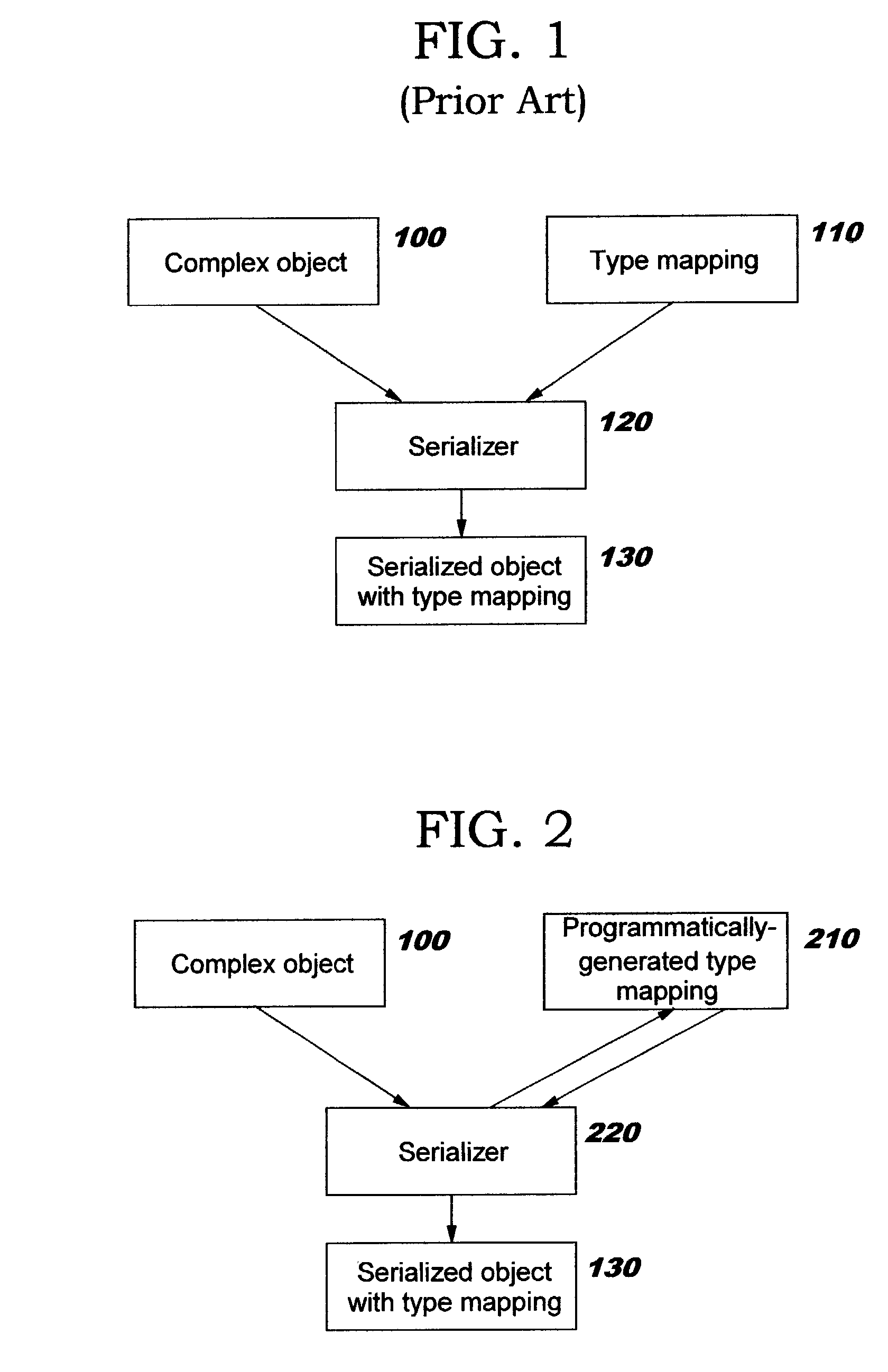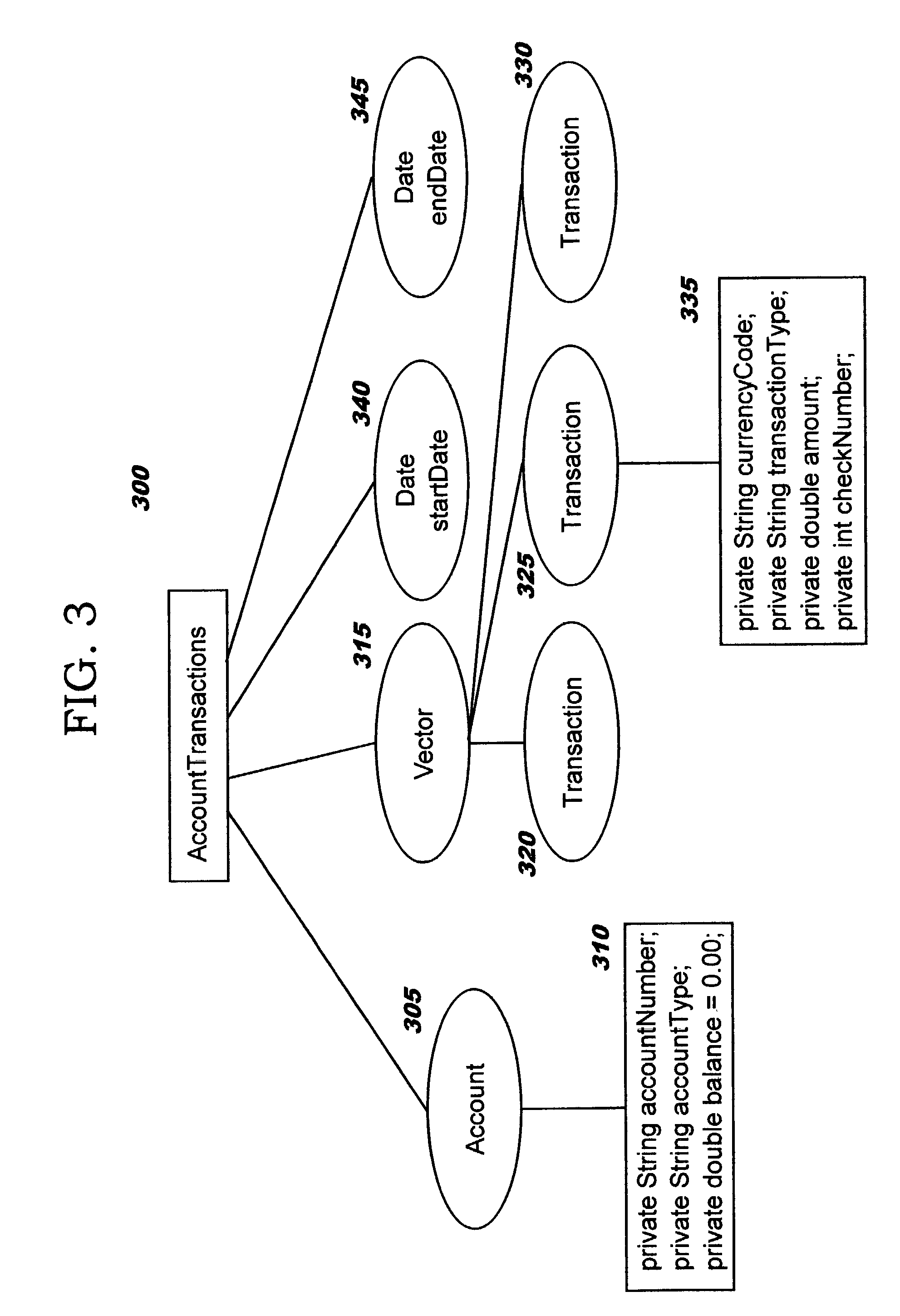Programmatically serializing complex objects using self-healing techniques
a technology of complex objects and serialization, applied in the field of computer programming, can solve the problems of increasing the time-to-market of applications, increasing the cost of providing distributed computing, and increasing the manual process of the prior art, and achieve the effect of facilitating programmatic interoperability
- Summary
- Abstract
- Description
- Claims
- Application Information
AI Technical Summary
Benefits of technology
Problems solved by technology
Method used
Image
Examples
Embodiment Construction
[0035]The present invention defines novel techniques for serializing objects. According to preferred embodiments, serialization is performed without requiring a programmer to identify each embedded object and without requiring the programmer to manually define type mappings for each of these objects. Instead, the embedded objects are discovered programmatically, at run-time, and mappings are programmatically created for each object. Similarly, the programmer is not required to identify each complex type within objects to be serialized, or to manually define mappings for these complex types, because preferred embodiments of the present invention programmatically create mappings for these complex types.
[0036]Exceptions generated during the serialization process are resolved programmatically, using introspection and / or reflection to analyze the serialization process. Corrective, programmatic self-healing actions are taken. That is, a “missing” type mapping that causes an exception duri...
PUM
 Login to View More
Login to View More Abstract
Description
Claims
Application Information
 Login to View More
Login to View More - R&D
- Intellectual Property
- Life Sciences
- Materials
- Tech Scout
- Unparalleled Data Quality
- Higher Quality Content
- 60% Fewer Hallucinations
Browse by: Latest US Patents, China's latest patents, Technical Efficacy Thesaurus, Application Domain, Technology Topic, Popular Technical Reports.
© 2025 PatSnap. All rights reserved.Legal|Privacy policy|Modern Slavery Act Transparency Statement|Sitemap|About US| Contact US: help@patsnap.com



